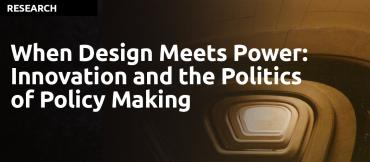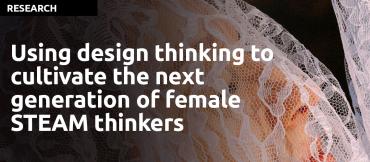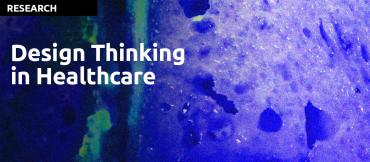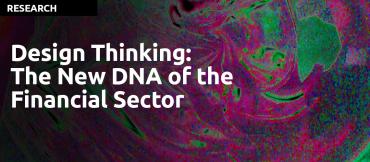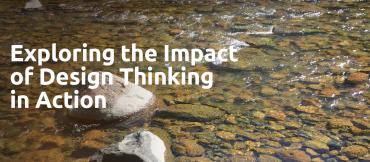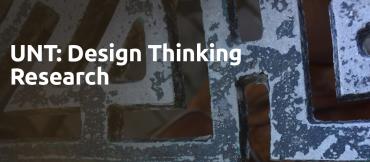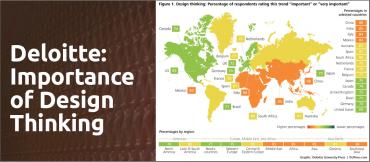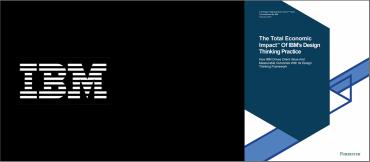
Design Thinking research with facts and figures about the impact and effectiveness of the process are needed to support its usefulness and validity as a problem solving process.
Design Thinking research would help us to understand how effective it is versus other problem solving and innovation methodologies and how these all fit/work together to make us more effective problem solvers and value creators.
In this section we have gathered Design Thinking Research that demonstrates its impact and effectiveness from well known sources such as IBM, Deloitte, Jeanne Liedtka of the Darden School of Business at UV, Oliver Wyman, University of North Texas and the CDC.
If you or your employer have done Design Thinking research on its impact or effectiveness within your work, we would love to hear from you and would be happy to publish the results. We believe in facts and want to promote the great outcomes of the Design Thinking process. We are looking for facts that others can use as evidence of the effectiveness of Design Thinking within their firms.
When Design Meets Power: Innovation and the Politics of Policy Making
Responding to the need for innovation, governments have begun experimenting with ‘design thinking’ approaches to reframe policy issues and generate and test new policy solutions.
This paper examines what is new about design thinking and compares this to rational and participatory approaches to policymaking, highlighting the difference between their logics, foundations and the basis on which they ‘speak truth to power’.
It then examines the impact of design thinking on policymaking in practice, using the example of public sector innovation (PSI) labs. The paper concludes that design thinking, when it comes in contact with power and politics, faces significant challenges, but that there are opportunities for design thinking and policymaking to work better together.
Using design thinking to cultivate the next generation of female STEAM thinkers
This study shows that a short, 3-day intervention can make a positive impact on young female youths’ perceptions of STEM, pro-social attitudes, creative confidence, and career pathways. It does this by creating a “hook” or stimulating interest among youths to have a more favorable opinion about working in STEM.
The study’s second finding is that persistent gender norms are hard to overturn and require additional interventions.
Third, this study offers strong evidence of the positive impact of a design thinking curriculum on female youths’ interest in STEM. The findings suggest that girls not only changed their perception of STEM subjects but also exhibited greater empathy and felt an increased sense of belonging in STEM as a result of participating in the workshop.
Solving the US Department of Homeland Security's Wicked Problems
The Department of Homeland Security’s Science and Technology Directorate (DHS S&T) requires a consistent yet flexible approach to address wicked problems. A design-thinking methodology holds promise, as its tenets align with the diversity and complexity inherent within the homeland security environment.
The research examined how design thinking is used to solve problems, S&T’s current approach to solving problems, and how other public organizations are using a design thinking methodology. Denmark’s MindLab and the Defense Advanced Research Projects Agency (DARPA) informed a framework for how DHS S&T could adopt a design-thinking approach.
Design Thinking In Healthcare
Applying Design Thinking to health care could enhance innovation, efficiency, and effectiveness by increasing focus on patient and provider needs. The objective of this review is to determine how Design Thinking has been used in health care and whether it is effective.
For a full index of all The Design Thinking Association articles on Design Thinking in Healthcare, visit our vertical markets - Healthcare page.
Customer Experience: The $14Bn Risk
Digitization of Services, especially in the banking sector is creating enormous risk for traditional banks who have not placed the customer at the center of their customer service activities. In general customers of physical banks are not very happy with their banks, whereas those at digital banks are much happier. Herein lies the risk for traditional physical banks. This report offers some good analytical information.
Design Thinking: The New DNA of the Financial Sector
How banks can boost their growth through design thinking in a de-banking era.
There is broad concern in the banking industry that an important share of revenues and the traditional ways of doing business are at risk due to the emergence of fintech startups that are challenging the established players. In the current economic environment, banks are looking to adapt and evolve their business models to meet these challenges and opportunities. Design Thinking is proving to be a useful tool that can help banks in their endeavors.
In this study by Oliver Wyman, it is clear that Design Thinking has already gained a lot of support as the following table demonstrates.
Exploring the Impact of Design Thinking in Action
Design thinking is a methodology of growing interest to both management scholars and organizations, yet little rigorous research on its efficacy in practice has been conducted, though anecdotal reports of success are numerous. This article reports on a case-based exploratory study aimed at identifying the elements actually practiced under the rubric of “design thinking” and assessing its value for enhancing organizational innovation performance.
Read the full paper.
Read the condensed version.
UNT: Design Thinking Research
Today’s successful innovators must examine problems from multiple angles. They must be practical, rational, creative and empathetic. They must employ expertise from fields outside their own. They must be “design thinkers.”
The Importance of Design Thinking in Redesigning HR
Deloitte's 2016 Global Human Capital Trends survey includes design thinking as one of the tools to redesign the Human Resources (HR) function and shows strong evidence that Human Resources Professionals place on using Design Thinking. The Design Thinking in Human Resources survey was conducted globally.
The article discusses the four powerful forces driving change for both Human Resources functions and the organizations they serve, creating talent challenges—as well as potential solutions—radically different from those faced by previous generations of leaders.
The Total Economic Impact of IBM's Design Thinking Practice
Design thinking places end users at the center of the design process and enables teams to collaborate and work more efficiently.
IBM leverages this framework in their Design Thinking practice across its diverse portfolio of products and services to help clients reduce costs, increase speed, and design better solutions.
IBM commissioned Forrester Consulting to conduct a Total Economic Impact™ (TEI) study and examine the potential return on investment (ROI) enterprises may realize by engaging IBM’s Design Thinking practice.

